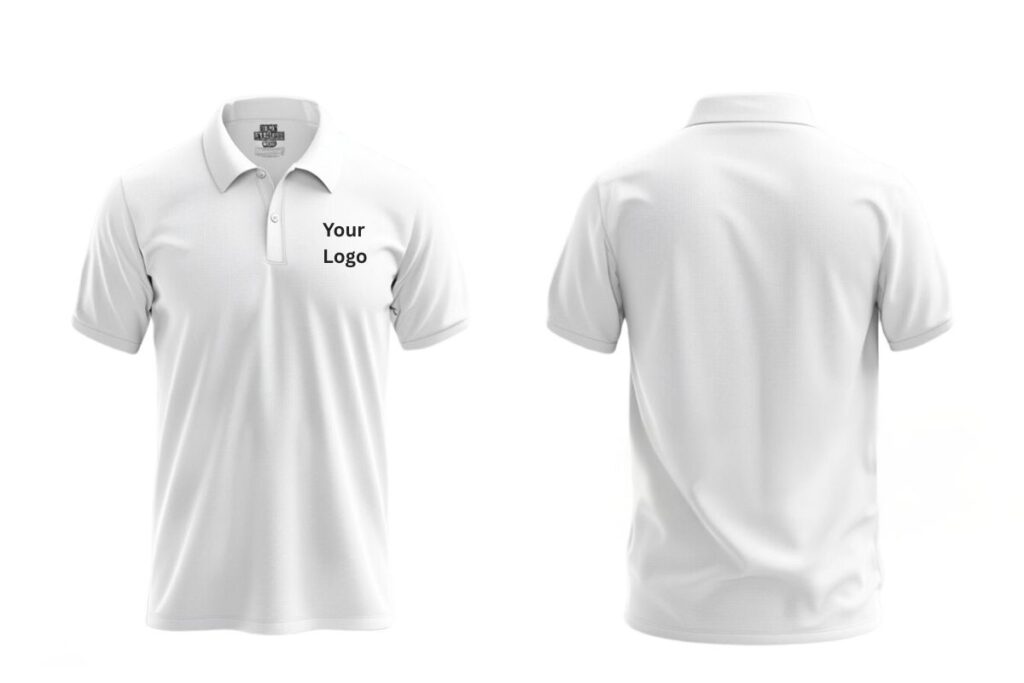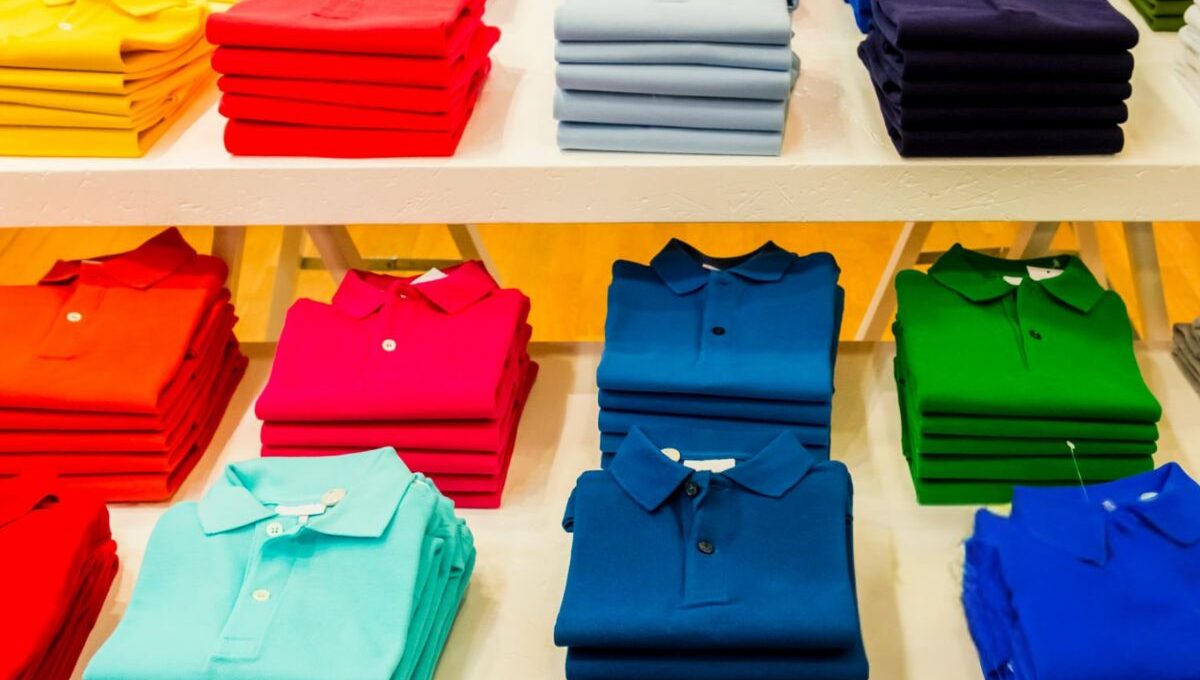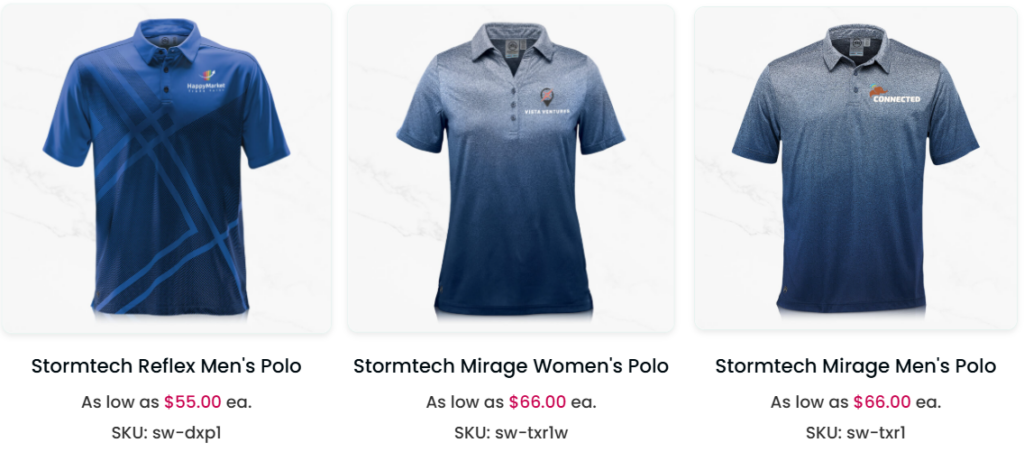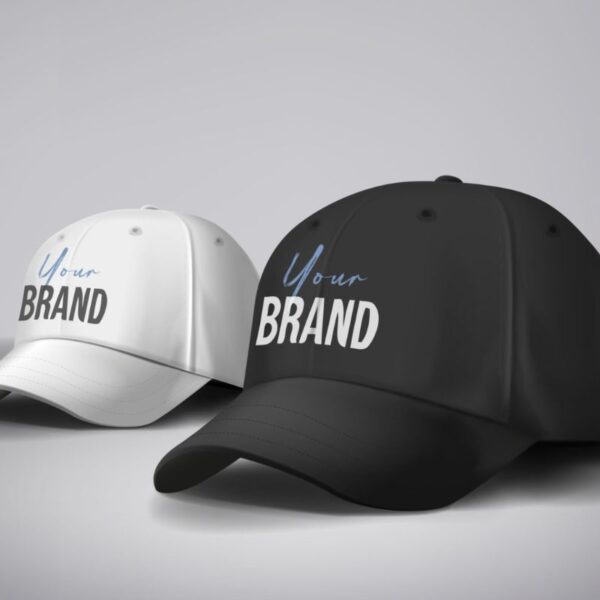In today’s fast-moving business world, branded clothing has evolved from a luxury into a necessity. Among all the options available, one item stands out for its versatility, professionalism, and comfort: the custom polo shirt.
Table of Contents
Whether you’re looking to outfit a startup team, offer branded merchandise to fans, or simply enter the booming market of personalized workwear, Print-on-Demand (POD) for Personalized Polo Shirts for Business allows you to do it all—without ever holding inventory or worrying about upfront costs.
This guide walks you through everything you need to know to design, sell, and scale your own line of personalized polo shirts for businesses—step by step.
Why Personalized Polo Shirts for Business?
Polo shirts are incredibly popular for a reason. They strike the perfect balance between casual and professional. And when you add a logo or name, they transform into a powerful branding tool.
Let’s explore why custom polos are so effective in 2025:
They Elevate Brand Image Instantly
Wearing a high-quality polo shirt embroidered with your company logo makes your team look organized, professional, and trustworthy. It’s a small detail that sends a big message to clients and customers.
They’re Functional Across Industries
Whether you’re a restaurant owner, real estate agent, gym trainer, or tech entrepreneur, a customized polo works across a variety of industries. It’s flexible, suitable for events, meetings, or even casual Fridays.
They’re Comfortable All Day
Unlike stiff button-downs or heavy uniforms, polos are lightweight, breathable, and comfortable enough to wear for long hours. Employees are more likely to wear them again and again.
They’re Gender-Neutral & Seasonless
Custom polos are universally flattering, and they work in all seasons. You can layer them in winter or wear them solo in the summer.
Step 1: Choose the Right Print-on-Demand Platform
Before you dive into design, you need a reliable POD partner. This service will be responsible for printing or embroidering your design, packing the order, and shipping it directly to your customer.
Here’s what to look for:
1. Quality of Embroidery or Print
Not all POD providers are equal. Some offer sharp, professional embroidery, while others focus more on direct-to-garment (DTG) printing. Always check product mockups, reviews, and sample options.
2. Integration with E-Commerce Platforms
The smoother the integration, the easier your life will be. Choose a POD partner that connects easily with Shopify, Etsy, WooCommerce, or Amazon so orders automatically sync.
3. Global Fulfillment and Shipping Times
If you’re selling internationally or to corporate clients, fast and reliable shipping is crucial. Choose POD services with fulfillment centers near your customer base.
4. Customization Flexibility
Some platforms let you add neck labels, sleeve prints, custom tags, and packaging. These small touches can boost your brand perception.
Popular POD platforms to explore include Printful, Printify, SPOD, Gelato, and Merchize. Order a sample from one or two to compare.
Step 2: Design Your Custom Polo Shirt Like a Pro
| Step | Tips & Actions | Why It Matters |
|---|---|---|
| 1. Define Your Purpose | Identify if it’s for employees, events, branding, or client gifts | Helps you choose the right fabric, fit, and design |
| 2. Choose the Right Fabric | Cotton for comfort, polyester blends for durability, moisture-wicking for sports | Matches the shirt with the activity and ensures wearer satisfaction |
| 3. Pick the Right Color | Use brand colors or neutral tones with contrast embroidery | Enhances brand recognition and keeps it professional |
| 4. Add a Logo or Design | Position the logo on left chest, sleeve, or back; keep it simple and clean | Maintains professional look and readability |
| 5. Use Embroidery Over Print | Embroidery gives a premium feel and lasts longer | Best for corporate or professional branding |
| 6. Select Fit & Style | Offer unisex, slim-fit, or relaxed options based on your audience | Increases comfort and likelihood of regular use |
| 7. Include Custom Text (Optional) | Add employee names or roles in small fonts | Personalizes the experience and builds team spirit |
| 8. Use a Mockup Generator | Preview how your design will look on different shirt styles | Prevents design errors and visualizes the final product |
| 9. Keep it Minimal | Avoid overcrowding with too many design elements | Maintains a polished and professional appearance |
| 10. Test Before Bulk Orders | Order samples to check embroidery quality, fit, and color accuracy | Ensures your brand image stays consistent and high-quality |
This is where your creativity comes in. A well-designed polo shirt can serve as both a stylish garment and a walking advertisement.
1. Select the Perfect Polo Shirt Style
Start with fabric. Cotton is soft and breathable, ideal for indoor environments and daily wear. Polyester is better for athletic or outdoor use since it wicks moisture and resists wrinkles. Blends give you the best of both—comfort and durability.
Next, think about fit. Classic fit is roomy and safe for all body types. Slim fit is modern and ideal for younger, style-conscious teams. Relaxed fits work great for casual settings or physical labor.
Then choose colors. Go with neutrals like black, white, navy, or gray for corporate clients. These shades pair easily with logos. For events or youth teams, consider vibrant options like red, royal blue, or lime green to stand out.
2. Pick Your Customization Method
There are several ways to personalize polos:
- Embroidery: This is the most professional and long-lasting method. It’s ideal for logos, initials, or small text. Embroidery works well on thicker fabrics and sends a premium message.
- Screen Printing: Perfect for simple, bold graphics and larger prints, like back designs. It’s budget-friendly for bulk orders and offers clean, sharp visuals.
- DTG (Direct-to-Garment) or Sublimation: Use this for full-color, detailed designs or gradients. Best for creative artwork, patterns, or more expressive branding.
3. Choose Strategic Placement
Where you place your design makes a big impact. The classic spot is the left chest—great for logos. Want to add flair? Place a slogan on the right chest or a name on the sleeve. Some brands even add website URLs on the back collar or use the full back for a bold statement.
Common Design Mistakes to Avoid

Avoid these beginner errors to ensure your polos come out polished and wearable:
- Too Much Going On: Don’t overload your design with too many elements. Keep it clean and readable.
- Low-Quality Images: Always upload high-resolution files. Blurry logos reflect poorly on your brand.
- Ignoring Contrast: If your logo is dark and your shirt is navy blue, it may disappear. Use colors that stand out on the chosen fabric.
- Wrong Placement: Misplaced logos (too low or too large) can make the shirt look unbalanced. Stick to tried-and-true placements unless you’re going for a bold statement.
Step 3: Order Samples and Test Quality
| Factor | What to Check | Why It Matters |
|---|---|---|
| 1. Fabric Quality | Feel the fabric — check for softness, breathability, and thickness | Ensures comfort and long-lasting wear |
| 2. Stitching & Seams | Inspect for tight, even stitching and reinforced seams | Indicates durability and professional craftsmanship |
| 3. Embroidery Precision | Look at logo/text embroidery—edges should be clean, not fraying or uneven | Reflects your brand’s quality and professionalism |
| 4. Color Accuracy | Compare actual color with your brand palette or mockup | Important for brand consistency |
| 5. Size & Fit | Try on samples for correct sizing, especially across different body types | Reduces return issues and improves satisfaction |
| 6. Shrinkage & Wash Test | Wash and dry the shirt once or twice, then recheck fit and quality | Ensures it holds up in real-world use |
| 7. Logo Placement | Make sure logo/text is aligned and positioned exactly as requested | Avoids off-center or poorly sized branding |
| 8. Collar Shape Retention | Check if the collar stays crisp after wear and washing | Keeps a sharp, professional look over time |
| 9. Fabric Pilling | Rub lightly or wash to see if the fabric pills or sheds | Ensures the shirt maintains its look after use |
| 10. Overall Comfort | Wear the polo for a few hours if possible | Helps judge if it’s suitable for daily business wear |
Before listing your products online, always order a sample for yourself.
Use it to:
- Inspect Stitching and Print Quality: Make sure your design appears sharp, clean, and durable.
- Test the Fit and Comfort: You’ll want to ensure the sizing is consistent and the fabric feels good to wear.
- Spot Issues Early: A sample lets you fix anything from color mismatches to awkward placements before customers see it.
It’s a small investment that saves you from potential negative reviews later.
Step 4: Set Up Your Online Store and Start Selling

Once your product is ready, you need a place to showcase and sell it. Choose an e-commerce platform that matches your needs and tech skills.
Recommended Platforms:
- Shopify is the easiest way to build a branded store with full control and POD integration.
- Etsy helps you tap into organic traffic and customers already searching for custom apparel.
- WooCommerce (with WordPress) gives you more flexibility if you’re tech-savvy.
- Amazon Merch offers massive reach but requires approval and has stricter rules.
Product Listings That Convert:
When writing your product description, don’t just describe the shirt—sell the benefit of wearing it. Mention how it feels, how it improves team unity, or how it enhances professionalism.
Example:
“Our custom embroidered polo shirts are crafted for modern teams who want to look sharp while staying comfortable. Featuring your logo on the chest and premium cotton fabric, they’re perfect for events, retail staff, or everyday wear.”
Use keywords like:
- Personalized polo shirt
- Custom logo polos
- Embroidered business polos
- Custom workwear
Also include sizing charts, care instructions, and a few lifestyle mockups (using mockup generators) to help buyers visualize the final product.
Step 5: Market and Promote Your Custom Polos
| Strategy | Target Audience | Channel | Key Message / Tactic |
|---|---|---|---|
| Social Media Ads | Small business owners, sports teams | Facebook, Instagram | “Outfit your brand with premium custom polos – bulk discounts available!” |
| Influencer Partnerships | Lifestyle shoppers, fitness fans | Instagram, TikTok | Send free samples to micro-influencers for reviews and organic reach |
| Email Marketing | Repeat customers, corporate buyers | Email Campaigns | Launch promotions like “Buy 3, Get 1 Free” or seasonal sales |
| B2B Outreach | Corporate HR, golf clubs, event planners | LinkedIn, Direct Email | Offer branded polos as employee uniforms or event giveaways |
| Etsy & Online Marketplaces | Custom gift buyers, occasion shoppers | Etsy, Amazon Handmade | Focus on personalization: “Monogrammed polos for weddings, anniversaries, and reunions” |
| Local Event Sponsorships | Community sports teams, nonprofit orgs | Local fairs, school events | Donate branded polos as prizes or uniforms – great for brand exposure |
| Content Marketing | SEO traffic, blog readers, corporate clients | Blog, YouTube, Pinterest | Share guides like “Top 5 Occasions to Gift Custom Polos” or style tutorials |
| Google Shopping Ads | High-intent buyers searching custom apparel | Google Search, Shopping Feed | Use product feed with clear product titles like “Custom Logo Polo Shirt – Bulk Ready” |
Now it’s time to attract customers.
1. Social Media Promotion
Start by sharing polished photos and videos on Instagram and Facebook. Show off different angles, staff members wearing the polos, and behind-the-scenes of the embroidery or printing process. Use targeted hashtags like #CustomPoloShirts or #BusinessBrandingGear.
Pinterest is great for showcasing lifestyle visuals—like matching polos for event staff or real estate agents.
LinkedIn is excellent for B2B clients. Post about how your polos help brands boost visibility and unity.
2. Collaborate with Influencers and Micro-Brands
Send free samples to small business owners, niche influencers, or startup founders. Ask for honest reviews, unboxings, or social media posts in return. A glowing endorsement can drive traffic and build trust quickly.
3. Email Marketing and Upsells
Collect emails through your website or social channels. Offer new customers a discount on their first bulk order. Send out occasional newsletters with new designs, seasonal collections, or bundled offers like:
“Buy 5 polos, get 1 free — perfect for your growing team!”
You can also upsell matching hats, tote bags, or jackets for brand consistency.
Step 6: Scale and Grow Your Polo Shirt Business
Once you’ve gained traction, scaling is the next step.
Here’s how:
- Ask for Customer Feedback: Send follow-up emails asking how the fit and design worked out. Use that data to refine your future offerings.
- Introduce New Products: Start offering custom hats, branded water bottles, or jackets using the same POD system.
- Sell in Bulk to Businesses: Create special order forms for large orders. Offer volume discounts and brand consultations.
- Run Limited-Time Collections: Seasonal color drops or special embroidery styles can create urgency and boost repeat sales.
Bonus Tips for Long-Term Success
- Use free mockup generators to show your designs in real-life settings.
- Highlight customer testimonials and showcase them on your site or social media.
- Run seasonal promotions and include countdown timers to boost urgency.
- Focus on comfort—because customers return for what feels good, not just what looks good.
Conclusion: Launch Your POD Polo Shirt Business Today
Creating and selling custom polo shirts with POD is one of the most effective and low-risk ways to start a branding or apparel business. There are no upfront inventory costs, no shipping headaches, and unlimited design flexibility.
Just follow the flow:
Design → Sample → List → Promote → Scale.
Whether you’re targeting companies, local teams, or influencers, a personalized polo shirt is a product that never goes out of style.





Sign up